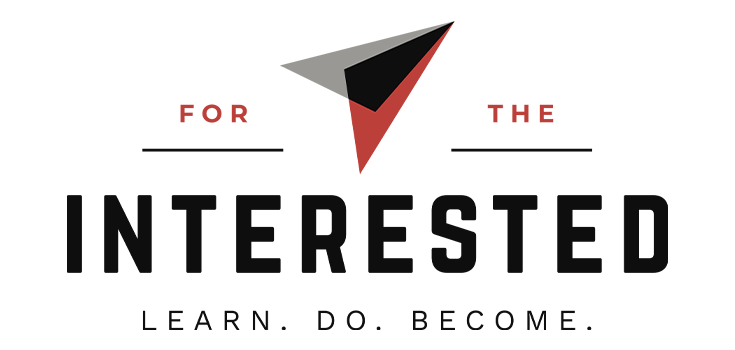It’s easier to quit.
That’s why it’s hard to stick with a project we start, no matter how enthusiastic we are about it.
But we can tilt the scales in our favor. I know because I’ve done it.
For the past eight months, I published my For The Interested newsletter every week and learned a few things in the process about how to stick with a project you start.
Here are four simple things you can do to conquer the urge to quit.
Choose projects you’d do regardless of the results.
Before you start a project, consider why you want to do it.
What do you hope to get out of it? Would you do it if you knew it would fail?
The battle to see a project through is often decided before it even begins.
Because if you embark on a project you’re not passionate about, your odds of overcoming the allure of quitting are slim.
In the case of my newsletter, I want people to read it but that’s not the sole reason I started it. It’s not results-dependent.
I like to discover new ideas, write about, and share them.
I knew it would be more fun to share them with 10,000 people than 10, but my enjoyment of the project wasn’t solely dependent on its success.
That makes it easier to stick with a project because it won’t ever feel like the work is a waste of time.
Turn the work into a habit.
Look for ways to turn your project work into a habit by incorporating repetitive elements into your process.
Do tasks at the same time, in the same order, or in the same way, and you can habit-ize your project work. This makes it easier and like less of an ongoing struggle.
Habits make you more productive and decrease the chance you abandon your project.
For my newsletter, I gather ideas throughout the week and share them on Twitter as I discover them. On Sunday afternoons, I go back through my Twitter feed to see what I’ve shared, choose the 10 I want to feature in the newsletter, and write them up.
This means I no longer have to “find time” to write my newsletter each week or worry about getting it done. My process allows me to be efficient and secure in the knowledge that it will get done.
It makes the project less stressful.
Plus, it’s become a habit — and habits are hard to break. In this case, that’s a good thing.
Create room to experiment.
Your project will get stale at some point if you do the same thing over and over again.
That staleness becomes a reason to quit the project — you simply get bored.
To combat this, find room in your project to experiment. This allows you to keep it fresh and often leads to new discoveries that improve the project as a whole.
In my newsletter, I consistently tweak features and experiment. While the basic format remains the same — short summaries of 10 interesting ideas with links to articles or videos explaining them — I experiment around that format.
Some weeks I ask my subscribers a Question of the Week and incorporate their answers into a future newsletter, I include a bonus link to some random fun video, I add a personal intro to each newsletter about something on my mind, and more.
Having space to try new things within my project not only improves its quality, but also keeps my interest in it.
It means I don’t abandon it or start over whenever I have an itch to try something new. I can incorporate it into my existing newsletter.
That kind of flexibility will increase the odds you stick with your project.
Track metrics.
While it’s important to choose a project that isn’t results-dependent, that doesn’t mean you should ignore metrics.
Choose a set of metrics that reflect your goals for the project and use them to measure your success on an ongoing basis.
Metrics reveal progress— even if it’s slow progress— and that progress can encourage you to carry on.
Positive feedback is a powerful weapon in the battle to overcome the allure of quitting.
Even if your metrics are not positive, they allow you to see improvement as you adjust and experiment within your product.
In the case of my newsletter, I monitor how many subscribers I get, how many open the newsletter when I send it, how many click links in it, and which links they click.
This gives me a ton of valuable information that motivates me to continue — either because things are going well and it’s growing or (just as importantly) it motivates me to improve aspects of the newsletter that may not perform as well as I’d like.
If you don’t track metrics, you’ll struggle to see your project’s progress or failure and increase the chances you quit.

